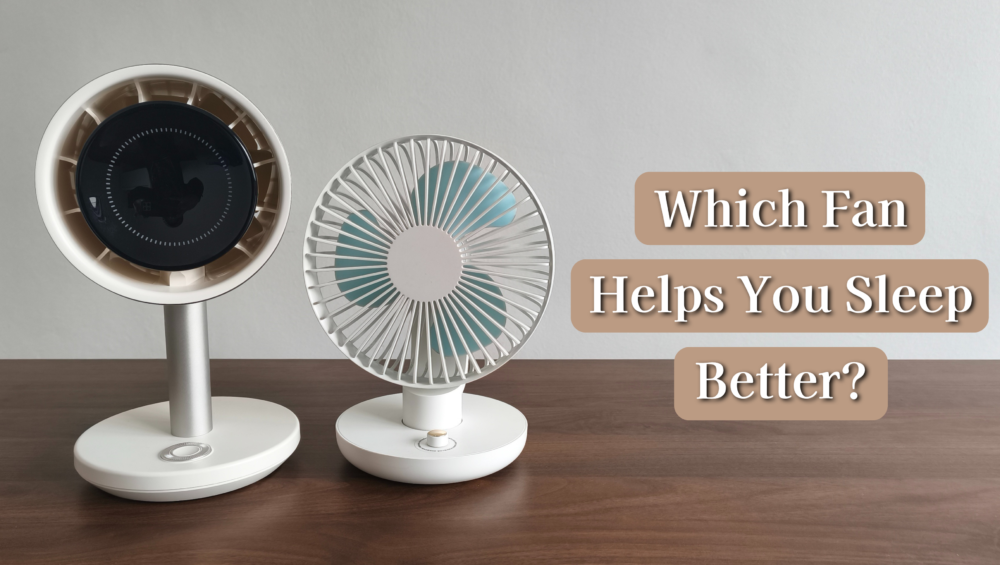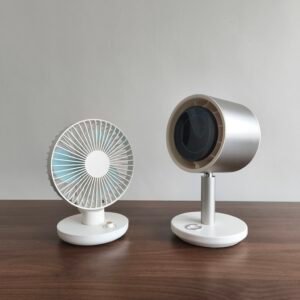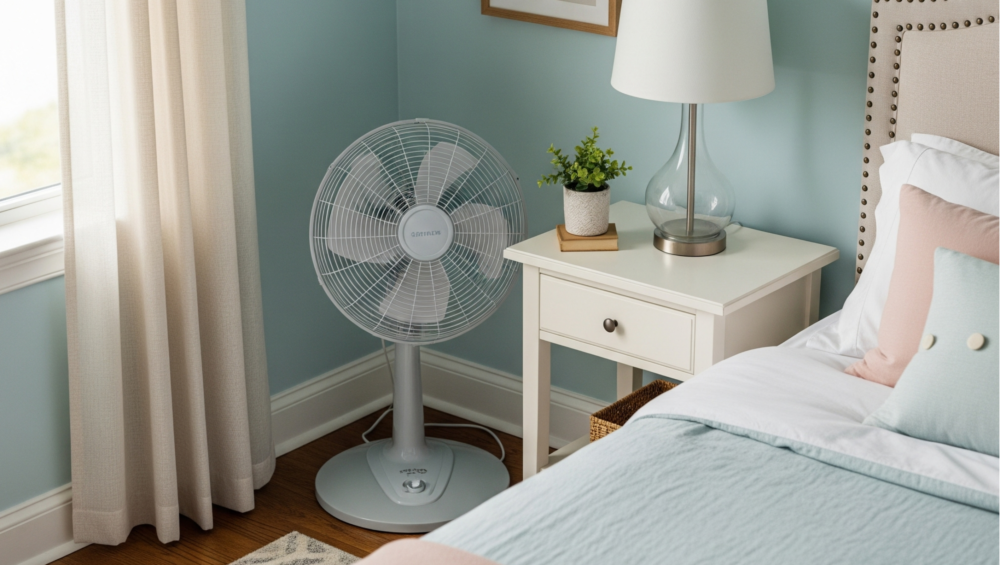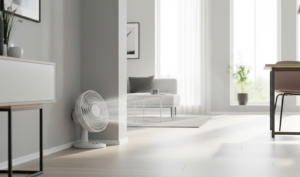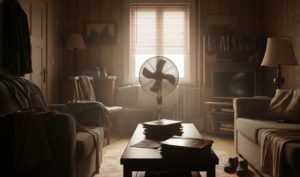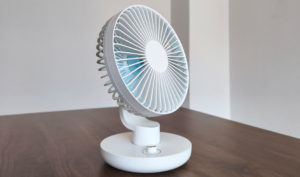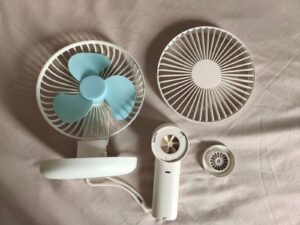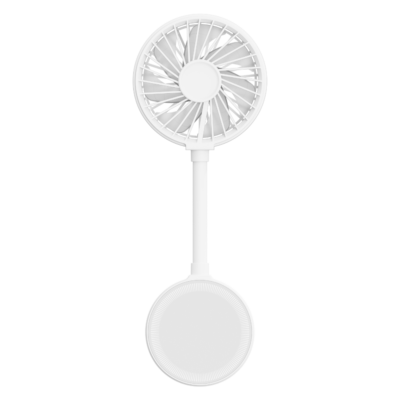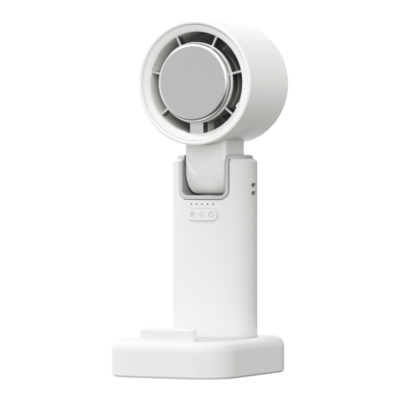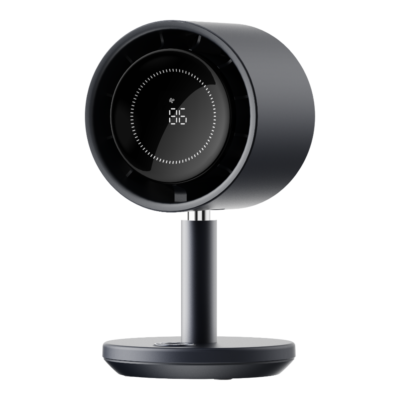When you’re trying to fall asleep, the last thing you want is a fan that’s too loud, too weak, or blowing air in the wrong direction. Some fans are great for daytime use, but sleep is a whole different game.
After testing both the JustZan Desktop Circulator Fan and the JustZan Ballet Rotating Desktop Fan for work and sleep over several weeks, here’s how they stack up when it comes to keeping you cool (and undisturbed) through the night.
Adjustability & Airflow Angle
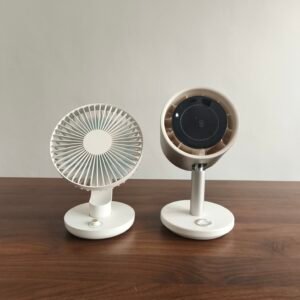 Desktop Circulator Fan
Desktop Circulator Fan
- Oscillation: Smooth 90º horizontal rotation with auto-reset function
- Manual Tilt: Adjustable tilt lets you angle the airflow up or down
- Best Sleeping Position: Best placed close to your bed without oscillation. Its taller body and focused airflow work well at mattress or chest level for targeted cooling.
The Desktop Circulator Fan combines smooth oscillation with a sturdy vertical tilt, giving you precise control over airflow direction. Its auto-reset feature brings the fan back to its default angle when turned off — a thoughtful touch for bedside use. Whether you prefer steady, directed breeze or broader room circulation, it delivers quiet and consistent performance.
Ballet Rotating Desktop Fan
- Oscillation: 180º horizontal rotation
- Manual Tilt: Yes, vertical tilt adjustment available
- Best Sleeping Position:Performs best when placed slightly farther from the bed with oscillation on. Its shorter body and wide wind coverage gently cool the space, making it ideal for both solo and shared sleeping setups.
The Ballet Fan shines in angle flexibility and coverage. Its tilting head and wide rotation let you direct airflow exactly where you need it — whether upward, downward, or straight ahead. Lightweight and compact, it’s perfect for smaller nightstands or rooms where subtle circulation is key.
Noise Level at Night
Desktop Circulator Fan
- Speed 32 and below: Near silent, soft whoosh
- Above speed 36: Still quiet, but with a bit more hum
- Overall Nighttime Suitability: Excellent, especially for light sleepers
If you’re a sensitive sleeper, the Desktop Circulator Fan’s whisper-quiet operation at mid-range speeds (32–36) is ideal. It keeps the room comfortable without becoming a distraction. The steady airflow with low noise combo makes it feel like having a white noise machine with a cooling upgrade.
Ballet Rotating Desktop Fan
- Speed 1–5: Practically silent
- Speed 6–10: Audible hum, but not disruptive
- Overall Nighttime Suitability: Very good for personal, close-range cooling
The Ballet Fan is especially effective when placed closer to your face or upper body, and at lower speeds, it’s almost imperceptible. It’s also lighter and easier to reposition mid-sleep if needed.
Bedside Convenience & Controls
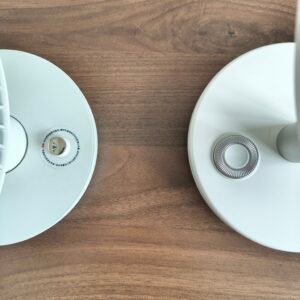 Desktop Circulator Fan
Desktop Circulator Fan
- Display: LED display showing wind speed and battery percentage
- Controls: Single tactile knob for power, speed adjustment and oscillation
- Design Bonus: Auto-reset function — fan returns to its original angle after shutting off
The Desktop Circulator Fan scores high on nighttime usability. The LED display is easy to read in low light, making it simple to check speed and battery level at a glance. The single-knob control feels solid and intuitive — no remote needed, just twist and go. Perfect for quick mid-sleep adjustments without turning on the lights.
Ballet Rotating Desktop Fan
- Display: No digital screen; battery status indicated by light (white = running, orange = low battery)
- Controls: Single multi-function knob for power, speed, and oscillation
- Design Bonus: Lightweight with a wide fan face — ideal for compact spaces and easy repositioning
The Ballet Fan keeps things simple with the same single-knob design, offering familiar, fuss-free control. While it lacks a digital display, you can still use it while charging — making it great for all-night use with a bedside USB-C cable. And thanks to its compact size, repositioning it is effortless when you want to adjust airflow or room layout.
Final Verdict: Which Fan Is Better for Sleeping?
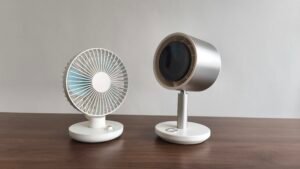
Specifications |
Desktop Circulator Fan |
Ballet Rotating Desktop Fan |
Wind Power |
⭐⭐⭐⭐ |
⭐⭐⭐⭐ |
Noise Level |
⭐⭐⭐⭐⭐ |
⭐⭐⭐⭐ |
Airflow Distribution |
⭐⭐⭐⭐ |
⭐⭐⭐⭐⭐ |
Ease of Control at Night |
⭐⭐⭐⭐ |
⭐⭐⭐ |
Best For |
Spacious rooms, long-range airflow |
Direct, close-range personal cooling |
Both the Desktop Circulator Fan and the Ballet Rotating Desktop Fan shine in their own way — but when it comes to bedside use during sleep, the details make all the difference.
Ballet Rotating Desktop Fan: Best for Flexible Cooling
The Ballet Fan offers a surprising amount of power in a compact body. What sets it apart for sleep use is its wider wind coverage, thanks to its large fan face, and its exceptionally lightweight build, making it effortless to reposition — even mid-sleep. The manual tilt and 180° oscillation also make it a dream for sleepers who like airflow directly on the face or chest. If you’re someone who values mobility, precise control, and close-range comfort, the Ballet Fan is a fantastic pick.
Desktop Circulator Fan: Best for Long, Undisturbed Sleep
On the other hand, the Desktop Circulator Fan wins on endurance and subtlety. Its longer battery life easily lasts through the night, even at moderate speeds. The LED display makes it easy to check battery level and wind speed in the dark, while its ultra-quiet operation ensures minimal disruption — ideal for light sleepers. While it’s slightly heavier and less adjustable in angle, it excels at steady, room-wide airflow without noise or fuss.
Overall Winner for Sleep: JustZan Desktop Circulator Fan
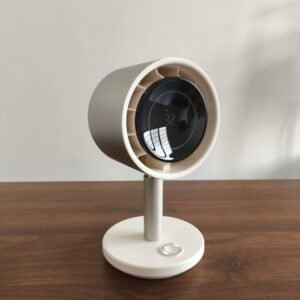
While both fans are excellent for bedside use, the Desktop Circulator Fan edges ahead for one key reason: it offers a more reliable sleep experience from dusk to dawn. Its quieter performance, longer battery life, and easy nighttime control make it the better companion if your goal is undisturbed, restful sleep — especially in a quiet room or warm environment.
That said, if you prioritize lightweight design and angle flexibility, the Ballet Fan still offers incredible value — particularly in smaller spaces or shared sleeping setups.
Both models are now available at limited-time prices, plus FREE DELIVERY until 31 August 2025, so whichever suits your sleep style, you’re getting top-tier performance at a great deal.
👉 Explore the Desktop Circulator Fan and Ballet Rotating Desktop Fan now — and enjoy cooler, smarter sleep every night.
